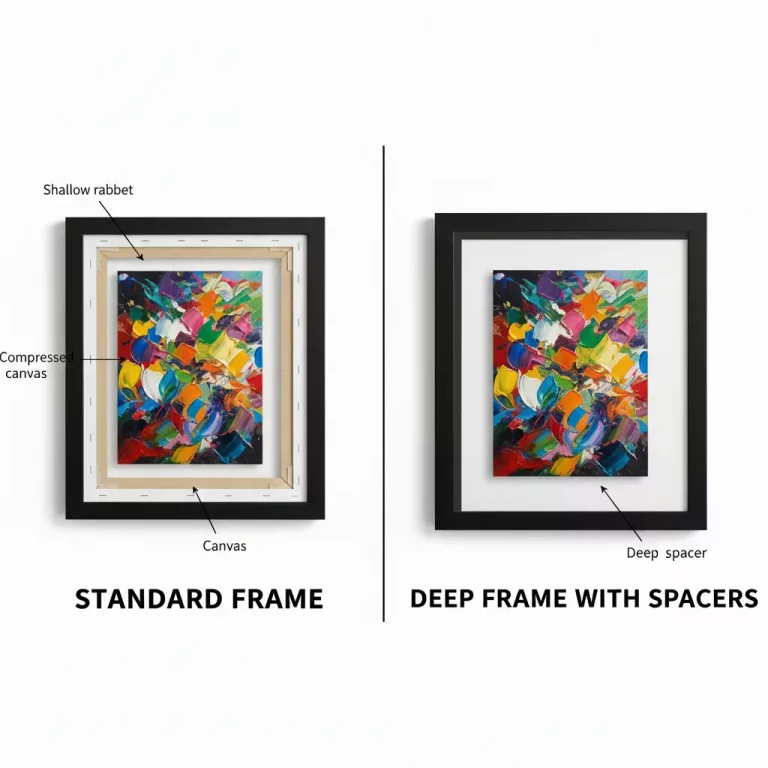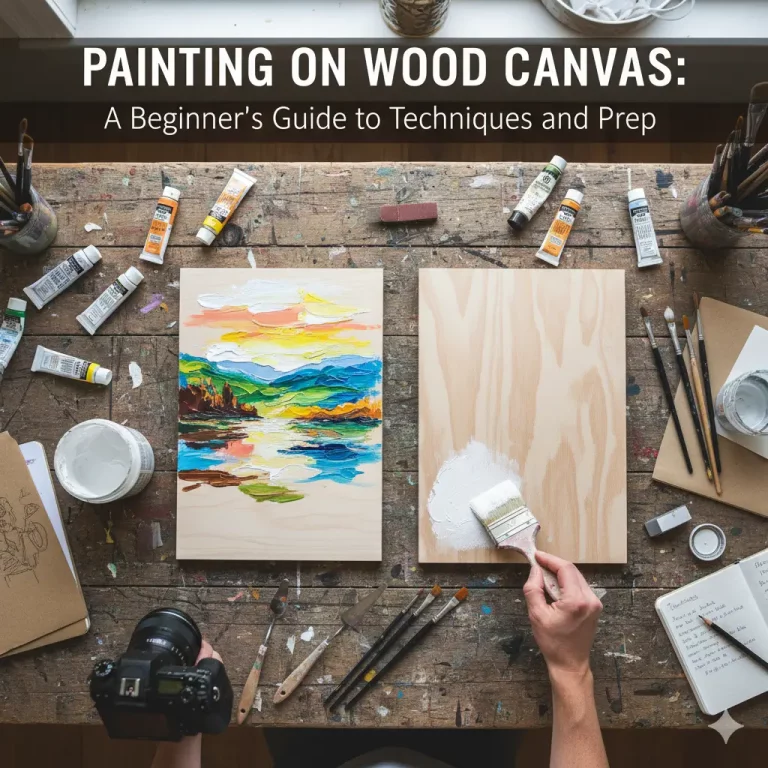Choosing the right painting canvas sizes can make or break your artistic vision. Whether you’re a beginner picking up your first brush or an experienced artist planning your next masterpiece, understanding canvas dimensions is essential for creating impactful artwork that fits your space and budget.
Canvas size affects everything from composition and detail to material costs and display options. A cramped composition on an oversized canvas can look lost and uninspiring, while intricate details on a tiny surface may go unnoticed. Getting the dimensions right from the start saves time, money, and frustration later in your creative process.
This comprehensive guide explores standard canvas measurements, helps you select the perfect size for different art styles, and provides practical tips for making informed decisions about your next painting project.
Standard Canvas Sizes Every Artist Should Know
Small Canvas Sizes (Under 12 inches)
Small canvases offer intimate spaces perfect for detailed work and experimentation:
Popular small sizes include:
- 4×4 inches (10×10 cm) – Perfect for miniature paintings and studies
- 5×7 inches (13×18 cm) – Ideal for portraits and small landscapes
- 8×10 inches (20×25 cm) – Great for gift paintings and practice pieces
- 9×12 inches (23×30 cm) – Excellent for plein air painting and sketches
Small painting canvas sizes work brilliantly for beginners because they require less paint, dry faster, and allow you to complete projects quickly. They’re also budget-friendly and perfect for experimenting with new techniques without committing significant resources.
Medium Canvas Sizes (12-24 inches)
Medium canvases strike an excellent balance between detail and impact:
Common medium sizes:
- 11×14 inches (28×36 cm) – Popular for portraits and still life
- 12×16 inches (30×41 cm) – Versatile for various subjects
- 16×20 inches (41×51 cm) – Standard size for many art competitions
- 18×24 inches (46×61 cm) – Ideal for landscape paintings
These dimensions provide enough space for detailed work while remaining manageable for most artists. Medium painting canvas sizes suit both studio work and outdoor painting sessions.
Large Canvas Sizes (24+ inches)
Large canvases make bold statements and allow for dramatic compositions:
Popular large formats:
- 24×30 inches (61×76 cm) – Great for detailed landscapes
- 30×40 inches (76×102 cm) – Perfect for large portraits
- 36×48 inches (91×122 cm) – Excellent for abstract works
- 48×60 inches (122×152 cm) – Museum-quality size for major pieces
Large painting canvas sizes require more paint, longer drying times, and adequate studio space. However, they offer unmatched visual impact and allow artists to work with broader brushstrokes and dramatic gestures.
Choosing Canvas Sizes by Art Style
Portrait Painting Canvas Sizes
Portrait work demands careful consideration of proportions and viewing distance:
Recommended sizes for portraits:
- Head and shoulders: 8×10 to 11×14 inches
- Three-quarter portraits: 16×20 to 18×24 inches
- Full-length portraits: 24×36 to 30×40 inches
The key is ensuring your subject’s features remain properly proportioned. Too small, and facial details become difficult to render; too large, and the painting may overwhelm viewers.
Landscape Painting Dimensions
Landscape artists often prefer horizontal formats that capture expansive vistas:
Ideal landscape sizes:
- Small studies: 5×7 to 9×12 inches
- Medium landscapes: 11×14 to 16×20 inches
- Large scenic views: 24×30 to 36×48 inches
Consider the scene’s natural proportions when selecting canvas dimensions. Panoramic landscapes might benefit from extra-wide formats, while intimate garden scenes work well on smaller surfaces.
Abstract Art Canvas Considerations
Abstract painters enjoy more flexibility with canvas proportions:
Popular abstract formats:
- Square canvases: 12×12, 16×16, 24×24 inches
- Vertical rectangles: 12×24, 16×32, 24×48 inches
- Horizontal formats: 20×16, 30×24, 48×36 inches
Abstract work often benefits from non-traditional proportions that enhance the artwork’s emotional impact and compositional flow.
Practical Considerations for Canvas Selection
Budget and Material Costs
Canvas size directly impacts your project budget:
- Small canvases: £5-15 each, require minimal paint
- Medium canvases: £15-40 each, moderate paint consumption
- Large canvases: £40-100+ each, significant paint requirements
Factor in framing costs too, as larger pieces require more expensive frames and may need professional installation.
Studio Space Requirements
Your workspace influences suitable painting canvas sizes:
Consider these factors:
- Easel capacity and stability
- Available wall space for wet paintings
- Storage requirements for finished work
- Lighting coverage across the canvas surface
Display and Transportation
Think about where your finished artwork will live:
- Home display: Measure wall space before starting
- Gallery exhibitions: Check venue requirements and hanging systems
- Art fairs: Consider portability and display logistics
- Online sales: Factor in shipping costs and packaging
Canvas Proportions and Aspect Ratios
Understanding aspect ratios helps create balanced compositions:
Golden Ratio Canvases
The golden ratio (1.618:1) creates naturally pleasing proportions:
- 8×13 inches (close approximation)
- 11×18 inches
- 16×26 inches
These dimensions often feel harmonious and draw viewers’ attention naturally.
Standard Aspect Ratios
Common ratios include:
- 4:3 ratio: 8×10, 12×16, 16×20 inches
- 3:2 ratio: 6×9, 12×18, 18×27 inches
- 5:4 ratio: 5×4, 10×8, 20×16 inches
Square Formats
Square canvases (1:1 ratio) offer unique compositional opportunities:
- Create balanced, centred compositions
- Works well for abstract and contemporary art
- Popular sizes: 6×6, 12×12, 16×16, 20×20 inches
Special Canvas Formats
Panoramic Canvases
Extra-wide formats capture sweeping scenes:
- 12×36 inches for intimate panoramas
- 16×48 inches for dramatic landscapes
- 24×72 inches for large-scale installations
Miniature Canvases
Tiny formats are perfect for detailed work:
- 2×2 inches for painting studies
- 3×3 inches for gift paintings
- 4×4 inches for daily practice pieces
Custom Canvas Sizes
Don’t limit yourself to standard dimensions. Custom painting canvas sizes allow you to:
- Match specific architectural spaces
- Create unique artistic statements
- Accommodate unusual subject matter proportions
Tips for Canvas Size Selection
Start with Thumbnails
Create small compositional sketches before committing to canvas size. This helps you visualise how your subject will work within different proportions.
Consider Your Experience Level
Beginners should start with smaller canvases to build confidence and technique. As skills develop, gradually work up to larger formats.
Think About Your Painting Style
- Detailed realism: Requires adequate space for fine work
- Impressionistic: Can work effectively on smaller surfaces
- Abstract expressionism: Often benefits from large formats
- Plein air: Portable sizes work best for outdoor painting
Plan for Framing
Standard painting canvas sizes are easier and cheaper to frame. Custom dimensions may require expensive custom framing solutions.
Common Canvas Size Mistakes to Avoid
Choosing Size Before Planning Composition
Always sketch your composition first. The subject matter should influence canvas dimensions, not the other way around.
Ignoring Viewing Distance
Large paintings need adequate viewing space. A massive canvas in a small room can feel overwhelming and impossible to appreciate properly.
Underestimating Material Costs
Large canvases consume significantly more paint and varnish. Budget accordingly to avoid running out of materials mid-project.
Forgetting About Storage
Consider where you’ll store works in progress and finished pieces. Large canvases require substantial storage space.
Making Your Final Decision
Selecting the right painting canvas sizes depends on multiple factors working together. Consider your artistic goals, available space, budget constraints, and intended display location. Remember that there’s no universally “correct” size—only what works best for your specific project and circumstances.
Start with standard dimensions while learning, then experiment with custom sizes as your confidence grows. The most important factor is creating artwork that achieves your artistic vision and connects with viewers effectively.
Whether you choose an intimate 5×7 inch study or a bold 48×60 inch statement piece, understanding canvas dimensions empowers you to make informed decisions that enhance your artistic practice and final results.





